Guinness World Records TV have been in touch to let us know that they’ve just completed a deal with Joost.
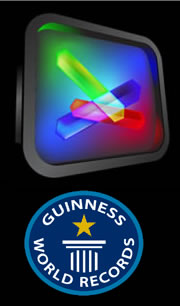 We weren’t expecting to be so Joost-tastic today, but when the news arrives, you’ve got to tell it.
We weren’t expecting to be so Joost-tastic today, but when the news arrives, you’ve got to tell it.
Initially 35 hours will be made available comprising of their UK show, Ultimate Guinness World Records. It’s available to Joost viewers globally.
They haven’t hung around either in getting the content out. Checking the latest incarnation of Joost, we see that the content is up there already.
Additional content will be added on a monthly basis, with Guinness World Record (GWR) making the point that they’ll be “controlling its programming line-up on the platform.”
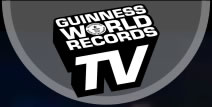 They’ve got 400 hours of it, so there’s plenty more to come.
They’ve got 400 hours of it, so there’s plenty more to come.
Both sides are in back-slapping mode with Rob Molloy, Director of Television at Guinness World Records keen to keep the door open to deliver their content to other platforms by saying “We are thrilled to be partnering with a company as exciting as Joost, once again this shows how easily Guinness World Records content can be adapted to fit into so many areas of new media and for such varied audiences.”
 Yvette Alberdingkthijm, EVP of content strategy and acquisition Joost took the pun-ing route of “We are delighted to have Guinness World Records on board and look forward to offering our viewers record breaking content.”
Yvette Alberdingkthijm, EVP of content strategy and acquisition Joost took the pun-ing route of “We are delighted to have Guinness World Records on board and look forward to offering our viewers record breaking content.”
It’s interesting to realise that GWR TV is part of the HIT Entertainment who own the hugely popular children’s content Bob the Builder, Barney and Thomas the Tank Engine.
We wonder if this GWR deal is a tester for HIT, opening the doors for a much bigger deal to be coming out.
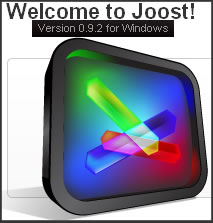 All was revealed today as to why. The SSL certificates that are used to encrypt all communication between the clients and the Joost servers ran out, as certificates do each year.
All was revealed today as to why. The SSL certificates that are used to encrypt all communication between the clients and the Joost servers ran out, as certificates do each year. Linux may be associated with sunlight-avoiding, beardy computer ‘enthusiasts’ pottering in sheds, but the popularity of its mobile phone version is predicted to soar.
Linux may be associated with sunlight-avoiding, beardy computer ‘enthusiasts’ pottering in sheds, but the popularity of its mobile phone version is predicted to soar. ABI also predicts that handsets incorporating the open source Linux as a real-time operating system (RTOS) replacement will also grow massively, leaping up from a base of just about zero today to 76 million units in 2012.
ABI also predicts that handsets incorporating the open source Linux as a real-time operating system (RTOS) replacement will also grow massively, leaping up from a base of just about zero today to 76 million units in 2012.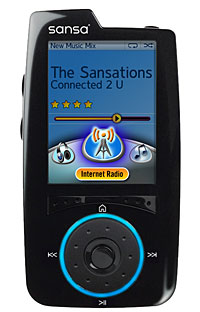 After connecting the Sansa Connect media player to the Internet via Wi-Fi, users will be able to listen to LAUNCHcast Internet radio, rummage through Flickr photos and check out what Yahoo Messenger friends and nearby Sansa Connect owners are grooving to.
After connecting the Sansa Connect media player to the Internet via Wi-Fi, users will be able to listen to LAUNCHcast Internet radio, rummage through Flickr photos and check out what Yahoo Messenger friends and nearby Sansa Connect owners are grooving to. “We see this as a very strong partnership with Yahoo,” purred top SanDisk marketing bod Eric Bone, adding that he saw his company progressing from “fast-follower mode to a technical-leadership mode” in a market still dominated by the ubiquitous iPod.
“We see this as a very strong partnership with Yahoo,” purred top SanDisk marketing bod Eric Bone, adding that he saw his company progressing from “fast-follower mode to a technical-leadership mode” in a market still dominated by the ubiquitous iPod. As well as wirelessly connecting to Yahoo’s Music service, the Connect supports MP3s and DRM WMAs provided by other services like Rhapsody, but you’ll have to get out Ye Olde cable to transfer the music from your desktop.
As well as wirelessly connecting to Yahoo’s Music service, the Connect supports MP3s and DRM WMAs provided by other services like Rhapsody, but you’ll have to get out Ye Olde cable to transfer the music from your desktop. Yesterday, Apple announced that it had shifted its 100 millionth iPod, making it the fastest selling music player in the history of the known universe and quite possibly beyond.
Yesterday, Apple announced that it had shifted its 100 millionth iPod, making it the fastest selling music player in the history of the known universe and quite possibly beyond.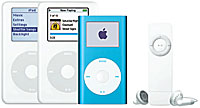 Never one to knowingly underhype his own products, Jobs continued; “iPod has helped millions of people around the world rekindle their passion for music, and we’re thrilled to be a part of that.”
Never one to knowingly underhype his own products, Jobs continued; “iPod has helped millions of people around the world rekindle their passion for music, and we’re thrilled to be a part of that.”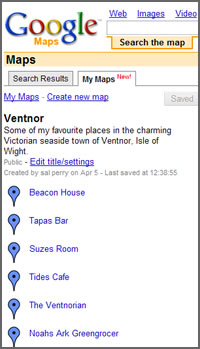 Google Maps has wowed people ever since it moved to the Web from the standalone Google Earth application, letting anyone with a Web browser take a look at both the maps and satellite images of anywhere in the world.
Google Maps has wowed people ever since it moved to the Web from the standalone Google Earth application, letting anyone with a Web browser take a look at both the maps and satellite images of anywhere in the world.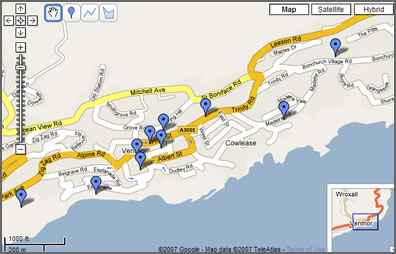

 Our Sister site, Ventnor-Blog, has been
Our Sister site, Ventnor-Blog, has been 
 Photographers looking for a simple and effective way to quickly frame shots might like to swivel their snapping eyes in the direction of the Ikodot.
Photographers looking for a simple and effective way to quickly frame shots might like to swivel their snapping eyes in the direction of the Ikodot.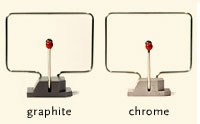 The user lines up the two balls to frame a photograph, with the lens coverage dictated by how close the finder is to your face.
The user lines up the two balls to frame a photograph, with the lens coverage dictated by how close the finder is to your face. The Ikodot also offers advantages for four-eyed photographers who perhaps find it hard to focus on a LCD screen or get close up to an optical viewfinder. It’s a shame that the finder can’t fold flat when not in use though.
The Ikodot also offers advantages for four-eyed photographers who perhaps find it hard to focus on a LCD screen or get close up to an optical viewfinder. It’s a shame that the finder can’t fold flat when not in use though.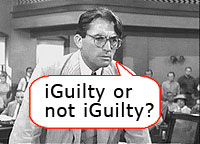 The EU alleges that agreements between Apple and the record companies are guilty of breaking European Union rules that prohibit restrictive business practices. It’s far from the first time that the EU and other
The EU alleges that agreements between Apple and the record companies are guilty of breaking European Union rules that prohibit restrictive business practices. It’s far from the first time that the EU and other  “The statement of objections alleges that distribution agreements between Apple and major record companies contain territorial sales restrictions,” he added.
“The statement of objections alleges that distribution agreements between Apple and major record companies contain territorial sales restrictions,” he added. Apple and the record companies now have two months to defend themselves in writing or take part in an oral hearing which usually happens around a month after a written reply has been received.
Apple and the record companies now have two months to defend themselves in writing or take part in an oral hearing which usually happens around a month after a written reply has been received.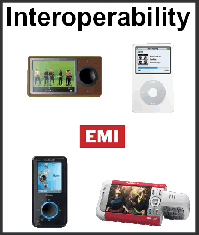 It wasn’t the
It wasn’t the  “We are going to give iTunes customers a choice — the current versions of our songs for the same 99 cent price, or new DRM-free versions of the same songs with even higher audio quality and the security of interoperability for just 30 cents more,” said Steve Jobs, Apple’s CEO.
“We are going to give iTunes customers a choice — the current versions of our songs for the same 99 cent price, or new DRM-free versions of the same songs with even higher audio quality and the security of interoperability for just 30 cents more,” said Steve Jobs, Apple’s CEO.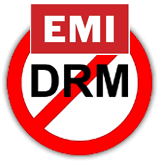 Keen not to miss out on the quote-fest, Eric Nicoli, CEO of EMI Group, piped up: “EMI and iTunes are once again teaming up to move the digital music industry forward by giving music fans higher quality audio that is virtually indistinguishable from the original recordings, with no usage restrictions on the music they love from their favourite artists.”
Keen not to miss out on the quote-fest, Eric Nicoli, CEO of EMI Group, piped up: “EMI and iTunes are once again teaming up to move the digital music industry forward by giving music fans higher quality audio that is virtually indistinguishable from the original recordings, with no usage restrictions on the music they love from their favourite artists.”